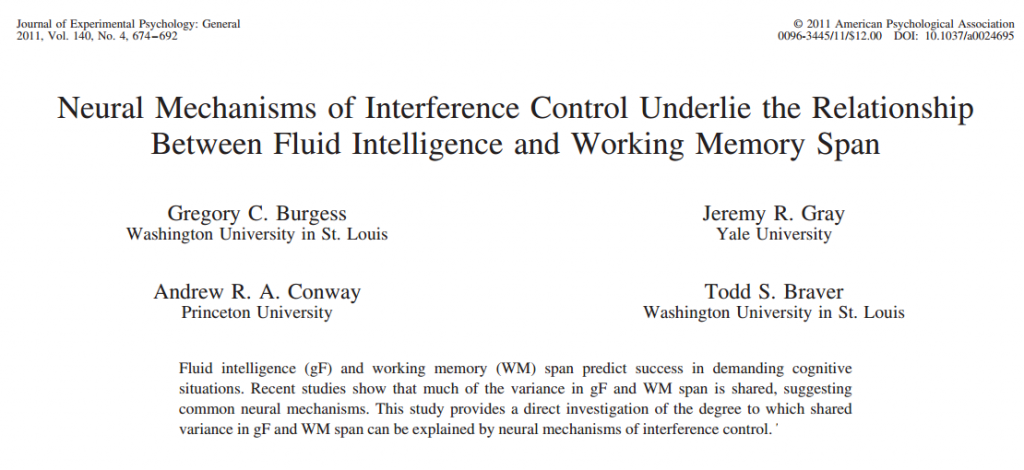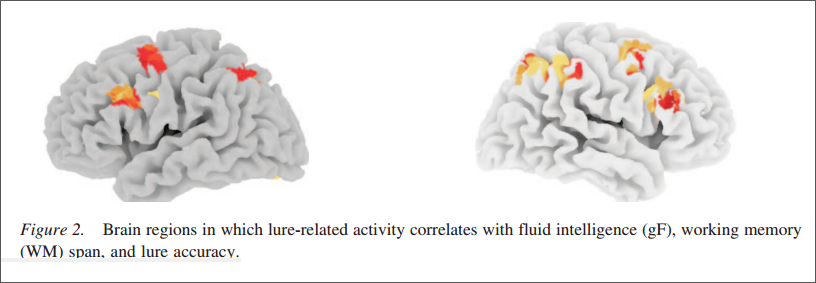Interference Control in i3’s 2G Brain Training Game
Based on recent research we now know that interference control is critical to high levels of fluid intelligence and working memory. Interference control is a kind of attentional control – the ability to filter out distracting information or suppress irrelevant habits or responses, when faced with cognitive challenges.
What is ‘interference’ in the dual n-back? You may have experienced interference in the standard dual n-back when the sequence of stimuli repeats itself before the target is presented. This creates confusion where you have to ‘repeat yourself’ to keep the series of items in memory.
The level of interference in i3 Mindware is set to a level that trains interference control. This is unique to this app.
 Interference Control Science: The Link Between Working Memory and IQ
Interference Control Science: The Link Between Working Memory and IQ
i3 Mindware is a working memory training app. How is working memory and IQ (general intelligence) related? How does working memory training transfer to gains in intelligence?
The link is via fluid intelligence. Our fluid intelligence (Gf) is our reasoning and novel problem solving ability – the key elements of how smart we are. Gf is the best predictor of performance on diverse IQ tasks, so much so that Gf and general intelligence (G) have been considered to be the same ability.
So what is shared between fluid intelligence and working memory? The answer is interference control – the ability to filter out distracting information while engaging in some cognitive task, using your attentional focus.
Studies by Burgess, Gray, and fellow grad student Tod Braver (article 1) provide brain imaging evidence of a large overlap of gF and WM span brain mechanisms when there is need for interference control on a task – but not otherwise. They found that brain regions common to fluid intelligence and working memory became more active when there was more need to filter out distractions (‘lures’). The brain areas underlying both interference control, working memory capacity and fluid intelligence were the lateral prefrontal cortex (lPFC) and parietal cortex, shown in the fMRI images below which show activation in both the left and right hemispheres of the brain.
[box]Burgess, G. C., Gray, J. R., Conway, A. R. A., & Braver, T. S. (2011). Neural mechanisms of interference control underlie the relationship between fluid intelligence and working memory span. Journal of Experimental Psychology: General, 140(4), 674–692. [/box]
Explanation for Why Evidence is Mixed for IQ Gains from N-Back Training
Some studies such as this one and this one provide evidence for IQ gains from n-back training, while others such as this one and this one do not. Why the inconsistency?
An explanation for the inconsistency is that traditional dual n-back training does not incorporate interference control in their n-back algorithm. None of the studies systematically vary interference in the n-back task, but this is the most critical variable for IQ transfer. If interference is generally greater in the n-back, transfer to IQ gains should be greater. i3 Mindware is the only brain training app that gives users interference control training.



